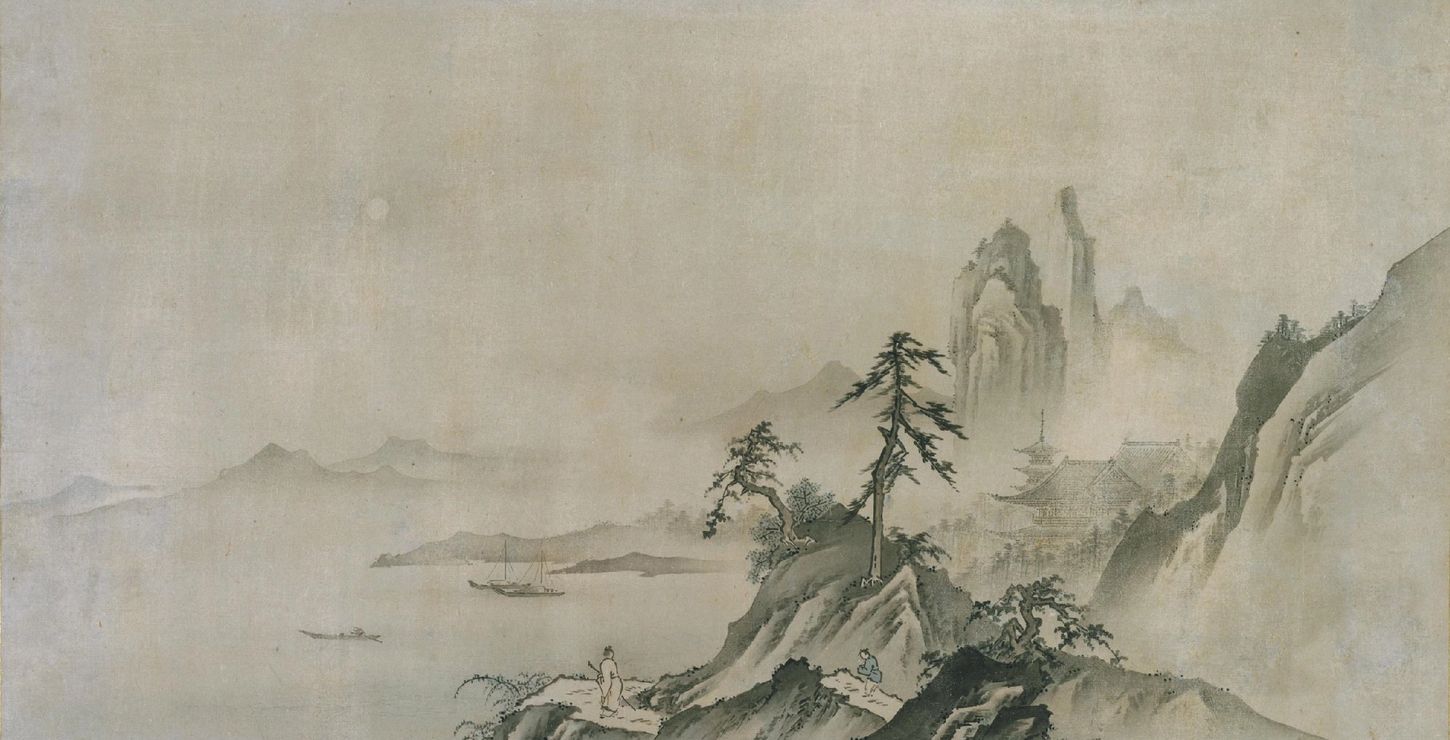Main Building
This exhibition displays the two styles of Japanese landscape painting that evolved over the centuries along parallel lines: the Chinese monochrome ink painting tradition, and the native "Yamato-e" tradition. The set of Landscapes of the Four Seasons in the center gallery is in the style of Sesshü (1420-1506), one of the principal early interpreters of the Chinese landscape style in Japan. Characterized by lofty, distant mountains and rugged terrain, these monumental scenes were inspired by Chinese paintings rather than by actual vistas seen by artists in Japan. The Chinese-style landscape became a hallmark of the Kanö school painters from the sixteenth century into the Meiji period (1868-1912). The Chinese style also had a major influence on the literati bunjin artists of the Edo (1615-1867) and Meiji periods, resulting in works such as the small ink sketches by Ike no Taiga, or the imposing Mountains in Autumn of 1910 by the woman painter Noguchi Shöhin. The Chinese style was effectively translated into underglaze blue scenes on ceramics as well. The Yamato-e tradition, emphasizing the gentler, more intimate scale of Japanese scenery, evolved with the rise of illustrated tales, as seen in the fourteenth-century handscroll fragments depicting the Legends of Jin'ö-ji Temple. Landscapes on lacquer trays and boxes also reflect the Yamato-e style, as does the exquisite miniature scene on the cloisonné enamel jar by Namikawa Yasuyuki. The division between Chinese style and Yamato-e style is not always clearly defined, and elements from both are often blended in harmonious compositions such as can be seen on the folding fans created by a group of artist-friends in the 1840s. The Japanese appreciation of the beauties of nature and its seasons can be traced back to the earliest beliefs of the Shinto religion, which revere the presence of the sacred in trees, rocks, and mountains. The love of nature is frequently expressed in depictions of Mount Fuji, which inspired generations of Japanese artists. Mount Fuji is often associated with dragons, who dwell in the clouds and are auspicious symbols of heaven and rain-bearing clouds. Mount Fuji became a popular subject in ceramics and decorative arts as well.
